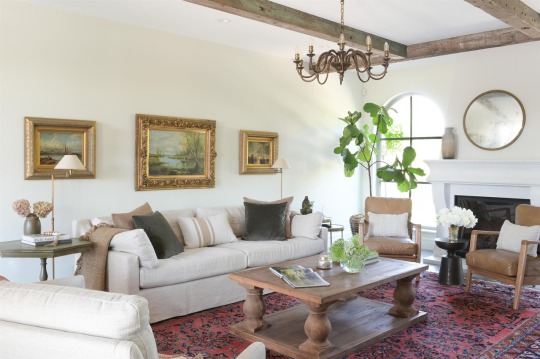#interior british columbia
Explore tagged Tumblr posts
Text

Walking along the Oliver Canal.
British Columbia
1958
#vintage camping#campfire light#canada#british columbia#oliver canal#history#hiking#rivers#interior bc#travel#1950s
277 notes
·
View notes
Text










Forest (No. 14)
Pinetree Lake, BC
#tourist attraction#Stewart-Cassiar Highway#British Columbia Interior#travel#original photography#vacation#landmark#landscape#Canada#summer 2023#British Columbia#forest#woods#flora#nature#mountains#countryside#clouds#Kitimat-Stikine District#the North#Three Sisters Range#fireweed#wildflower#lake shore#meadow#Skeena Region
46 notes
·
View notes
Text

2 notes
·
View notes
Text















597 | Langley, BC
CAD$9,998,000 • 6 bd • 5.5 ba • 8,781 sq. ft
Built in 2021
*All photos belong to their rightful owners*
#real estate#home#house#hgtv#hgtv home#dream life#dream home#home inspiration#interior design#interior#exterior design#exterior#british columbia
19 notes
·
View notes
Text


#cabin#canada#nature#photography#british columbia#kitchen#plants#house plant#interiors#travel blog#travel
16 notes
·
View notes
Text




2 notes
·
View notes
Text





Bourgeois/Lechasseur Architectes recently completed a new home in Mauricie, a region of the Canadian province of Québec between Montréal and Québec City...
#art photography#architecture#interior home decor#interiordesign#home design#house#photo#photooftheday#design#life#nice#canadian#canada#montreal#british columbia#quebec#art#city#nature#natural stone
2 notes
·
View notes
Text
How to Choose the Right Contractor for Cost-Effective Commercial Demolition

When it comes to commercial demolition, choosing the right contractor can make all the difference. Whether you’re tearing down a retail space, office building, or industrial facility, the right team will ensure the process is efficient, safe, and cost-effective. For businesses and property owners in Canada, finding a reliable demolition contractor like Moose Demolition & Junk Removal can streamline your project and minimize stress.
Here are some key factors to consider when selecting a commercial demolition contractor in Canada:
Assess Their Experience and Expertise
Demolition projects require specialized skills, particularly for large-scale commercial spaces. Look for contractors with a proven track record in handling similar projects. Ask about:
● The size and scope of their previous projects.
● Their familiarity with Canadian building codes and environmental regulations.
● Any unique challenges they’ve tackled in the past.
Moose Demolition & Junk Removal, for instance, has extensive experience in handling diverse demolition projects, ensuring that each job is completed to the highest standards.
Verify Licensing and Insurance
It’s crucial to work with a contractor who is fully licensed and insured. This protects you from liability in case of accidents or property damage. Confirm that the contractor:
● Holds valid licenses to operate in your region.
● Carries comprehensive liability insurance and worker’s compensation coverage.
Request Detailed Cost Estimates
A cost-effective demolition doesn’t mean settling for the cheapest option. Request detailed estimates from multiple contractors, and ensure they include:
● Labour costs.
● Equipment and material disposal fees.
● Any additional services like asbestos removal or site cleanup.
Transparent pricing, like that offered by Moose Demolition & Junk Removal, helps you avoid unexpected costs.
Evaluate Their Equipment and Technology
A well-equipped contractor can handle demolition more efficiently. Check if they use modern tools and machinery to ensure precision and safety. Advanced equipment also minimizes environmental impact and reduces the time needed to complete the project.
Prioritize Safety and Environmental Standards
Safety is paramount in demolition projects. A reputable contractor should adhere to strict safety protocols and provide their workers with appropriate training and protective gear. Additionally, consider their approach to environmental responsibility:
● Do they recycle materials whenever possible?
● Are they compliant with local waste disposal and hazardous material handling laws?
Moose Demolition & Junk Removal prioritizes eco-friendly practices, ensuring your project aligns with Canada’s environmental guidelines.
Read Reviews and Seek References
Online reviews and client testimonials provide valuable insights into a contractor’s reliability and quality of service. Don’t hesitate to ask for references from past clients to learn more about their experiences.
Confirm the Project Timeline
Time is money in commercial demolition. Choose a contractor who can provide a realistic timeline for your project and has the resources to stick to it. Delays can result in increased costs and disrupt your plans.
Ensure Comprehensive Services
Beyond demolition, look for contractors who offer additional services like site cleanup, junk removal, or even assistance with permits. This can save you time and effort in managing multiple vendors.
Why Moose Demolition & Junk Removal Stands Out
Moose Demolition & Junk Removal is a trusted name in Canada for commercial demolition services. Here’s why clients consistently choose them:
● Expertise: Years of experience in diverse demolition projects.
● Transparency: Clear pricing with no hidden fees.
● Eco-Friendly Practices: Commitment to recycling and responsible waste disposal.
● Customer-Centric Approach: Tailored services to meet unique project needs.
By choosing the right contractor, you can ensure your commercial demolition project is completed efficiently, safely, and within budget. Moose Demolition & Junk Removal is here to help Canadian businesses achieve their goals with minimal hassle. Contact us today to learn more about our services and request a free quote.
#demolition services#demolition company#home demolition cost#junk removal services#demolition contractor#demolition north vancouver#interior demolition surrey#demolition prices#cost of demolition#budget demolition#industrial demolition north vancouver#commercial demolition north vancouver#commercial demolition bc#demolition in canada#interior demolition bc#industrial demolition bc#junk removal ladner#house demolition cost#commercial demolition british columbia#old house demolition cost#interior demolition north vancouver#selective demolition north vancouver#interior demolition british columbia#house demolition cost calgary#interior demolition burnaby#residential demolition contractors coquitlam#demolition service north vancouver
0 notes
Text

2024 Interior Design Show (IDS) Vancouver x VCC West x Waterfront.
Twelve Oaks Flooring's display booth / "Perpetua Bar": designed by Stark Architecture
"The Future Neighbourhood": immersive feature designed by Leckie Studio, SvN, AD Projects, WAO Architecture, and Petit Architect
"The Distict": Goods by And Ceramic Studio
#rick chung#media#collage#features#design#interior design#vancouver#vancity#downtown vancouver#british columbia#lower mainland#conference#showcase#architecture#architect#designer#designers#designing
0 notes
Text
"Spiritualism was not popular in all BC towns, but when Emily Carr attended her seance, it had won a significant following in Victoria. Spiritualist associations were founded in Victoria and Nanaimo during the late 1880s, and they remained vibrant well into the twentieth century. Victoria gained an ordained spiritualist minister in 1915 and Nanaimo in 1926. In 1901, forty-three Victorians defined themselves as spiritualists, and many more attended their meetings. In the Nanaimo area, with its smaller population, eighty people told the census-taker that they were spiritualists. ...Nanaimoites typically opted for some level of fuzzy fidelity, with nominal adherence to mainstream Christian denominations. Nonetheless, the eighty spiritualists outnumbered the irreligious in Nanaimo by about two to one, as only forty-four residents defined themselves as atheists or of “no religion” in 1901. This ratio is atypical, as the irreligious in other BC towns significantly outnumbered the adherents of metaphysical religions in both 1901 and 1911.
Many Nanaimo spiritualists were miners or members of a mining family. Of the twenty-six spiritualist Nanaimo men who listed occupations on the census, twenty, or 77 percent, were miners. Perhaps the high number of fatal accidents in the mines led at least some colliers and their wives to spiritualism, which offered the hope of reconnecting with a loved one. An address of appreciation from George Campbell, chair of the Nanaimo Spiritualist Association, to visiting medium George P. Colby stressed the importance of this. Campbell thanked Colby for his work in the community as “Test Medium and Inspirational Lecturer,” noting that the association felt
grateful for the privilege we have had of communing with those of our loved ones who have joined the greatest throng of immortals in the summerland beyond – for the words of sympathy that have comforted bruised hearts bringing to them a realization of the presence of their supposed dead and a knowledge of the measureless possibilities of life.
Although spiritualism was popular among many people who sought connection with lost loved ones, it was far from popular with certain segments of BC society. Protestant church leaders attacked it as occultism and rank heresy. Such criticism was not new at the turn of the century. In 1870, Edward Cridge, dean of Victoria’s Christ Church Cathedral and soon to become the first bishop of the Carr family’s Reformed Episcopal Church, published a sermon titled “Spiritualism:” or Modern Necromancy, in which he denounced spiritualism as “divining or soothsaying by means of the dead.” He warned readers that it was
a very ancient wickedness. Its various forms are enumerated and condemned in the Book of Deuteronomy ... The Christian who meddles with spiritualism stands on the verge of an abyss.
Cridge clearly knew that at least some of his flock had experimented with spiritualism because he acknowledged that curiosity or a desire to commune with departed loved ones could tempt people to try it. However, he proclaimed firmly that
this practice is denounced in Holy Scripture under the severest penalties ... That which is hateful to God, and punishable by his law with death, cannot be a thing for a Christian to touch, but to shun with abhorrence.
Other Protestant ministers were also strongly opposed to spiritualism, and the Catholic Church declared that spiritualists were trafficking with demons and evil spirits.
Both church leaders and people of a more secular and scientific bent enjoyed unmasking visiting mediums as frauds. For example, in July 1900, a lengthy Vancouver Province article titled “Some Shady Shades” attacked a recent visiting medium as a charlatan and provided a more detailed critique of a “Professor Raymond” – a dubious traveller “in the path of easy money” – who was then in town. It described a Raymond seance, complete with several female “victims” of the deception and typical spiritualist manifestations, such as rapping and the playing of musical instruments by unseen hands in the dark. The reporter clearly believed that Raymond himself was the source of all these phenomena, and he commented snidely that
the guitar banging shade was careless, for not only did it drop the guitar, but it most reprehensibly jabbed an elbow into the eye of the little girl.
For their part, spiritualists recognized that some mediums were frauds, but they strongly defended the authenticity of most mediums and of spiritualism as a legitimate religious alternative. In late-nineteenth-century Ontario, the criminal courts did not always agree. In 1899, some Toronto mediums were charged under the witchcraft section of the Vagrancy Act for telling fortunes or conjuring spirits. The BC courts seemed less concerned with this issue, and at least some BC authorities were willing to grant legitimacy to spiritualist organizations. For example, spiritualists petitioned Nanaimo City Council in 1897, protesting a bylaw that forced local mediums and seers to pay a fifty-dollar licence fee every six months, lumping them in with fortune tellers and other occultists. They insisted that spiritualism be treated like any other church, and council complied with their wishes. The words “medium” and “seer” were removed from the bylaw, though fortune tellers still had to pay the fee. The fact that a year afterward, a leading Nanaimo spiritualist was elected mayor reinforces the acceptability of this alternative movement in the community.
Whereas orthodox Christian ministers condemned spiritualist beliefs, some spiritualists claimed that their movement could bolster Christian faith, as it proved the existence of life after death and therefore negated the arguments of atheists and other “infidels.” For example, George Colby, who gave a talk in Nanaimo titled “What Good Has Spiritualism Done,” argued that
with the advance of material science, the people became more materialistic in their opinions and boldly denied the immortality of the soul. What theology failed to prove, Spiritualism, with its phenomena practically and in a scientific manner demonstrated the truth that we continue to live after the dissolution of the body.
As Timothy Noddings notes, mainstream Christians, unbelievers, and adherents of metaphysical religions all employed the rhetorical weapons of science, rationality, and modernity in their debates with each other, with each side labelling the other as irrational and unscientific.
Although these groups often painted themselves as antithetical to the others, scholars have demonstrated that like Emily Carr, many spiritualists in the United States and Central Canada, particularly many middle-class spiritualists, saw nothing incompatible with practising spiritualism, especially in the privacy of their homes, while remaining members of Protestant churches. Some clergy dabbled in spiritualism themselves, but the Canadian Protestant churches had limited tolerance for such behaviour, as Stan McMullin reveals in chronicling the expulsion of Reverend B.F. Austin from the Methodist ministry for heresy in 1899. Robert Lowery, the infidel newspaperman of the Kootenays, certainly felt that Christianity and spiritualism had much in common, none of it good. As he explained in an article:
You are not expected to examine the Bible; neither are you permitted to investigate the seance. How like as two peas are twin sisters of superstition.
...
...prominent spiritualists also spurned the churches, despite the contrary opinions of family members. The death of a former mayor of Victoria, James Fell, revealed the complex relationship that could exist between secularism, spiritualism, and mainstream Christianity. In 1890, the Anglican bishop Hills noted in his diary that Fell had just passed away and had
left directions no other Service should be said over his body but the form used by the Odd Fellows. Poor man he held spiritualist opinions in which he persevered to the last. He used occasionally to come to the Cathedral where he had a pew. His family are much vexed at the directions left.
Fell’s son asked Hills for permission to have his father buried in the Church of England section of the cemetery, despite the lack of an Anglican burial service. Hills agreed, apparently because
Fell had many excellent qualities was benevolent and never minded what trouble he took for the poor and the sick. Under these circumstances I consented to the request and indeed felt it to be a relief that the service of the Church was not required.
...
As several scholars have noted, women were much more attracted to spiritualism than to irreligion. Owen speculates that many who turned to the alternative religions in Britain may have been alienated by the cold scientific rationalism of unbelief, as it left no room for a spiritual dimension. Women may have been drawn to spiritualism because their natures were assumed to be more spiritual than those of men. The gender ideology of the time, which defined women as sensitive and passive, made them especially suited as mediums, and many took on this role. As well, infant mortality rates in the nineteenth century were much higher than they are today. Although both fathers and mothers mourned dead children, and both sought reconnection through spiritualism, this option appears to have appealed chiefly to women, who had generally had close ties to their children. The fact that the census lists so few unmarried spiritualists may indicate that a number of wives brought their husband to spiritualism, as many did to the Christian churches. For example, the 1881 census records Mary Ann Hardy of Nanaimo as a spiritualist, whereas her miner husband, Thomas, is enumerated as a Unitarian. In the 1891 census, both Mary Ann and Thomas defined themselves as spiritualists, as they also did in 1901. A few husbands identified themselves as spiritualists, whereas their wives remained orthodox Christians (at least officially), but these cases were the exception, unlike those involving unbelieving husbands and Christian wives. Some married women differed from their husbands in defining themselves as spiritualists, as was true of well-known Victoria photographer Hannah Maynard. She and her husband were both Anglicans in 1881, but after her youngest daughter died of typhoid in 1883, she began to attend seances, incorporating ghostly figures into some of her photographic work. Her desire to reconnect with lost family members was intensified by the deaths of another daughter and a daughter-in-law within the next ten years. In 1891, the census identified her as a spiritualist, whereas her husband’s religion was “not given.”
...
An 1894 petition to the Legislative Assembly allows us to look more deeply at potential interest in and support for spiritualists on Vancouver Island. The petition, a first effort to eliminate the licence fee for clairvoyants, who were lumped in with astrologers, seers, and fortune tellers under the Municipal Act, was signed by 186 people, 58 from Victoria and the rest from Nanaimo. This is significantly more than the 123 Victorians and Nanaimoites who were listed on the 1901 census as spiritualists (a large minority of whom were children, who do not sign petitions). The petitioners stated that they were “Spiritualists, and profess that form of religious belief commonly known as Spiritualism, and others are their friends.” Many could not be linked to either the 1891 or the 1901 census, but of the Victoria petitioners who could be traced, five were spiritualists and five were infidels or freethinkers, pointing once again to the connection between the two. Ten belonged to mainstream denominations. The latter pattern was even clearer among the Nanaimo petitioners, most of whom identified with orthodox denominations, primarily as Methodists, Anglicans, or Presbyterians. Seven Nanaimo petitioners were listed as spiritualists in the census, one was an atheist, and over thirty were officially Christian (including a Quaker and a Unitarian). Perhaps the Methodist, Anglican, and Presbyterian signatories were simply friends of spiritualists, but it seems much more likely that most would have had at least some level of interest in the alternative religion, perhaps attending an occasional seance or other spiritualist event, and revealing once again that the census omitted many people who had a significant interest in this form of spirituality.
The Sivertz family, which emigrated from Iceland to British Columbia in 1888, is a case in point. Bent Sivertz wrote a detailed account of his parents’ working-class lives in Victoria and Vancouver before the First World War, and his parents, Elinborg and Christian, can also be found on the Victoria census of 1911, which lists them as Lutherans. Bent, however, tells a different and more complex story. Although his mother was raised a Lutheran, she had left the church well before 1911, disenchanted by its hellfire-and-damnation preaching. She spent some years with a Baptist church but had become much more interested in spiritualism by 1910, perhaps influenced by a female friend who had joined the faith. She “gradually over half a dozen years, left off attendance at the Baptist Church in favour of séances.” This did not deter her from praying for her children as they grew up or from attending at least one revival meeting at the Metropolitan Methodist Church. Like many other people, Elinborg created a lived religion that worked for her but did not necessarily correspond to the clear divisions preferred by theologians. Although she had a close relationship with her husband, she did not have his support in her spiritual explorations, as he “preferred not to go to church” and practised what his son termed a “kindly agnosticism.” Whereas the majority of Victoria’s married spiritualists shared their belief in the supernatural with their spouse, the Sivertzes reflect a not uncommon BC pattern of fluidity between alternative and mainstream religions, and a familiar gendered pattern of an agnostic husband and a believing wife. But this configuration was invisible to the census-taker, as either he or the Sivertzes themselves conflated their ethnic and religious identities – in Iceland, where they grew up, the Lutheran Church was the official denomination. Or perhaps, even in the religiously open climate of British Columbia, these working-class immigrants simply felt safer in naming a relatively mainstream denomination than in telling the enumerator that they were an unbeliever and a spiritualist.
The Sivertzes also reflect links between unbelief, alternative religions, and political activism that were not uncommon in British Columbia and Canada more generally. A labour leader, Christian Sivertz was president of the B.C. Federation of Labour by 1912. He was no socialist, though, and he opposed radicalism in the labour revolt of 1919. Unbelief was typically linked to the more radical BC socialists, but Christian demonstrates that it had a broader reach among at least some less radical BC labour leaders. Elinborg was involved in the major suffrage organization in Victoria, the Political Equality League, and in other social reform endeavours. Although BC suffragists tended to be Christians, some were not. Scholars have noted the link between alternative religions, such as spiritualism, and social activism, including the struggle for women’s rights, a connection that certainly applied in Elinborg’s case."
- Lynne Marks, Infidels and the Damn Churches: Irreligion and Religion in Settler British Columbia. Vancouver: University of British Columbia Press, 2017. p. 190-197.
#spiritualism#fuzzy fidelity#christianity in canada#history of irreligion#working class history#british columbia history#history of religion#academic quote#nanaimo#victoria#kootenays#interior british columbia#vancouver island#working class atheism#working class culture#middle class ideology#women in politics#women's suffrage
2 notes
·
View notes
Text

Train spotting while hiking in Thompson Canyon
British Columbia
1968
#vintage camping#campfire light#canada#british columbia#thompson canyon#interior bc#history#hiking#outdoors#vintage#1960s
176 notes
·
View notes
Text
Discover the contrasting interior design styles of Vancouver's bedrooms and living rooms! From cozy comfort to modern chic, explore the diverse aesthetics shaping urban homes.
#living room interior design in vancouver#home interior design in vancouver#interior design firms in vancouver#bathroom interior designer vancouver#interior design services in british columbia#interior design
0 notes
Text










Forest (No. 10)
Eddontenajon Lake, BC
#Eddontenajon Lake#Stikine Country#British Columbia Interior#travel#original photography#vacation#tourist attraction#landmark#landscape#evening light#Canada#summer 2023#British Columbia#forest#woods#beach#flora#nature#mountains#countryside#lake shore#clouds
43 notes
·
View notes
Text
Key to Peaceful Tenancies: Understanding Tenant Screening & Procurement
In the realm of property management, success hinges not only on property upkeep and revenue generation but also on the caliber of tenants occupying the premises. Tenant screening and procurement, therefore, emerge as pivotal processes in ensuring smooth and prosperous tenancies. Let’s delve into the significance of these practices and why they are essential for property owners and managers alike.
Understanding Tenant Screening and Procurement
Tenant screening involves a thorough evaluation of prospective tenants to assess their suitability for occupancy. This process typically includes scrutinizing factors such as credit history, rental history, income verification, and criminal background checks. On the other hand, tenant procurement encompasses the strategies and techniques employed to attract and secure desirable tenants for a property.
Importance of Tenant Screening
Risk Mitigation: Tenant screening serves as a proactive measure to mitigate risks associated with unreliable or problematic tenants. By evaluating applicants’ financial stability and rental history, property owners can identify potential red flags and avoid leasing to individuals with a history of late payments, evictions, or property damage.
Protecting Property Assets: Property owners invest significant resources in acquiring and maintaining their properties. Tenant screening helps safeguard these assets by ensuring that tenants are capable of fulfilling their financial obligations and maintaining the premises in good condition.
Preserving Community Harmony: Harmonious relationships among tenants are crucial for fostering a positive living environment within multi-unit properties. Through thorough screening, property managers can select tenants who are compatible with the existing community, reducing the likelihood of conflicts and disturbances.
Legal Compliance: Adhering to fair housing laws and regulations is imperative for property owners and managers. Proper tenant screening ensures compliance with anti-discrimination laws by applying consistent criteria to all applicants and avoiding discriminatory practices based on factors such as race, religion, or familial status.
Importance of Tenant Procurement
Optimizing Occupancy Rates: Effective tenant procurement strategies help minimize vacancy periods by attracting suitable tenants in a timely manner. Employing targeted marketing efforts and showcasing property features can enhance visibility and appeal, thereby accelerating the leasing process.
Enhancing Property Reputation: A well-executed tenant procurement strategy can elevate the reputation of a property among prospective tenants and the local community. Positive word-of-mouth endorsements and online reviews from satisfied tenants contribute to the property’s desirability and marketability.
Maximizing Rental Income: Securing high-quality tenants through strategic procurement efforts can result in higher rental rates and increased rental income. Properties that offer desirable amenities and are marketed effectively are more likely to command premium rents, thereby optimizing revenue potential for property owners.
Minimizing Turnover: Tenant procurement strategies that focus on attracting long-term, responsible tenants contribute to reduced turnover rates. Stable tenancies translate to lower vacancy-related expenses and turnover costs, such as cleaning, repairs, and advertising for new tenants.
Conclusion
Tenant screening and procurement are integral components of successful property management, offering numerous benefits for property owners, managers, and tenants alike. By implementing thorough screening processes and strategic procurement strategies, property stakeholders can minimize risks, optimize occupancy rates, and cultivate positive rental experiences for all parties involved. Embracing these practices demonstrates a commitment to fostering thriving communities and safeguarding property assets in the ever-evolving landscape of real estate management.
Facebook
Instagram
Bluberd
#canada#property management#airbnb#real estate#interior design#british columbia#hiking#waterfall#river
0 notes
Text









587 | Langley, BC
CAD$7,980,000 • 5 bd • 8 ba • 8,029 sq. ft
Built in 2019
*All photos belong to their rightful owners*
#real estate#home#house#interior#interior design#exterior#exterior design#hgtv#hgtv home#dream life#dream home#home inspiration#british columbia
5 notes
·
View notes
Photo

Vestibule - Mudroom Inspiration for a small coastal entryway remodel with a light wood floor and a brown floor and gray walls
#british columbia design#treasured keepsakes#hidden tv#vancouver interior design#beach vibe#white walls
0 notes